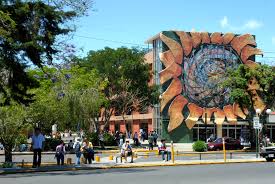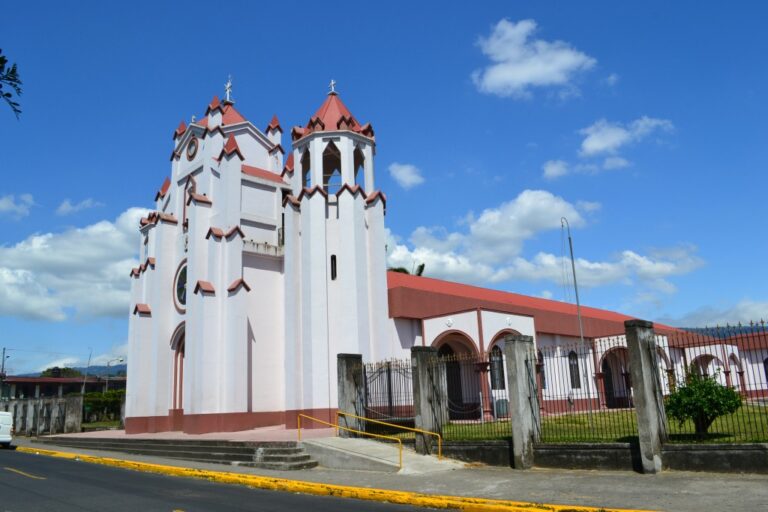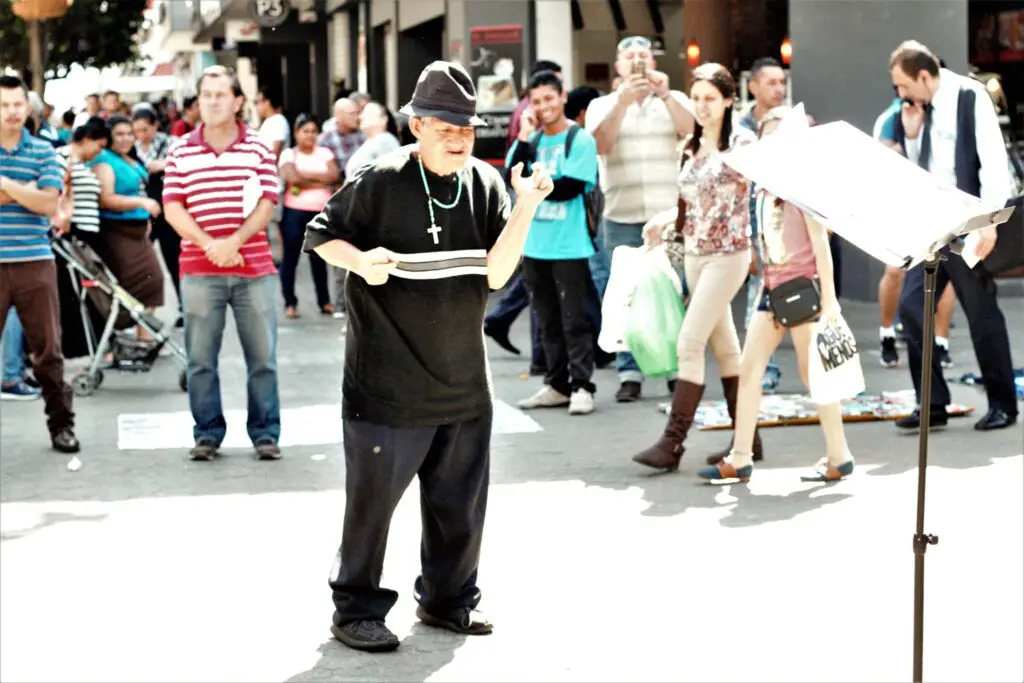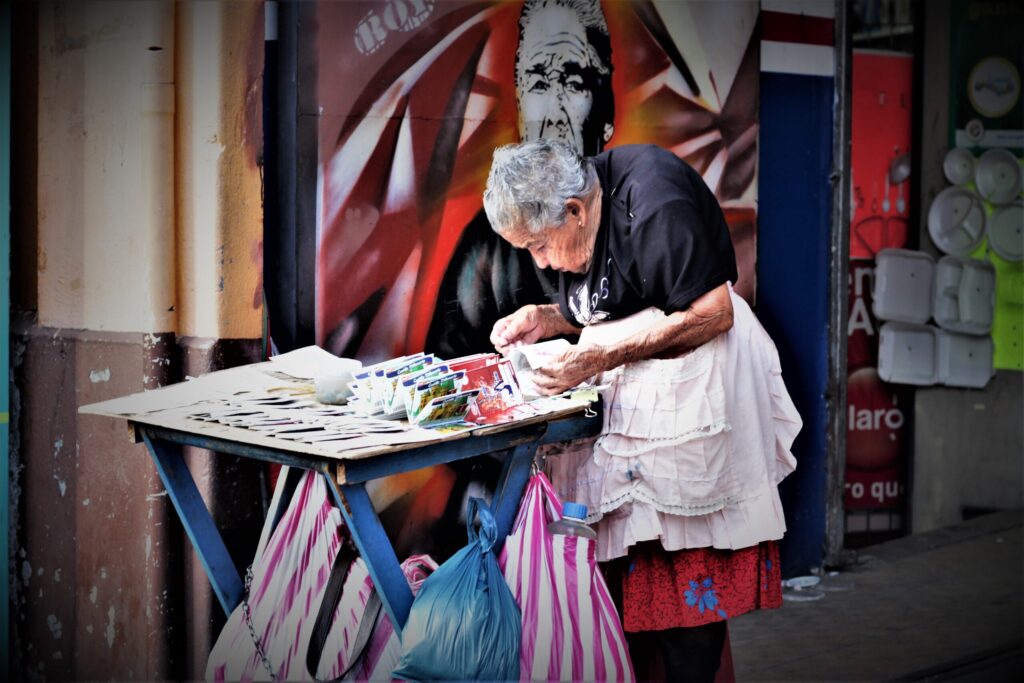Listen to the Podcast version
The Silence of the Stadium and the Echo in the Wallet
The silence that flooded the National Stadium after the 0-0 draw against Honduras did not just mark the end of a sporting aspiration; it was the sound of a cash register slamming shut for an entire country. Gone are the euphoric caravans of Brazil 2014 or the hopeful tension of Russia 2018. Today, Costa Rica wakes up to a gray reality: the 2026 World Cup, the first in our own region (North America), will be watched on television.
But the tragedy transcends the pitch. The elimination of the National Team represents a quantifiable financial disaster that will hit everyone from the informal street vendor to the balance sheets of major corporations. According to projections based on studies from the International Center for Economic Policy (CINPE-UNA) and historical data from chambers of commerce, Costa Rica will fail to perceive between $85 and $120 million (approximately 62 billion colones) due to this failure.
While Panama City and Port-au-Prince (Haiti) celebrate qualification—securing a multi-million dollar injection of foreign currency and an explosion of internal consumption—Costa Rica is preparing for a “Black June” in 2026. The country didn’t just lose a sports ticket; it lost one of its most powerful engines for economic dynamism, right at a moment when reactivation was needed.
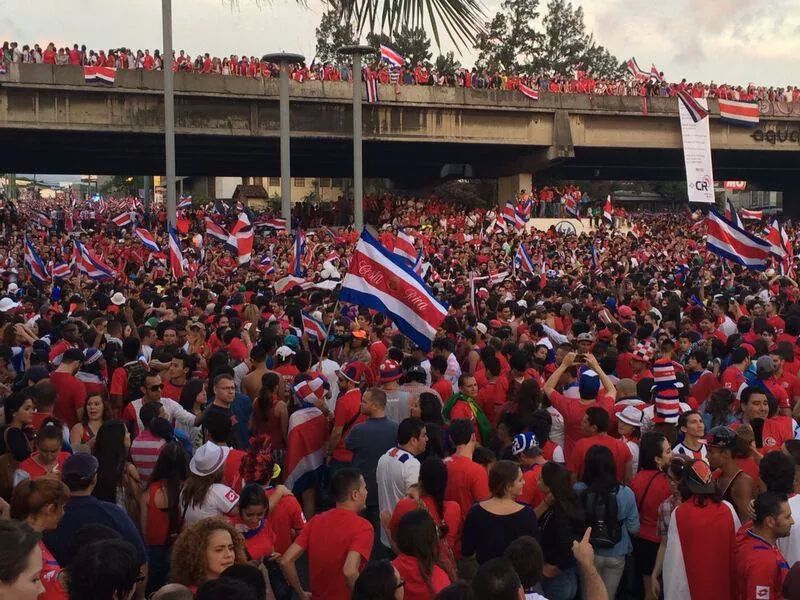
II. The Macroeconomic Impact: Slowing Down the “World Cup Effect”
To understand the magnitude of the blow, one must understand that football in Costa Rica is not a game; it is an industry with a high multiplier effect. Economists estimate that for every dollar invested or generated by the football ecosystem (Federation, clubs, sponsorships), between $3 and $4 moves in the real economy through services, transport, food, and commerce.
By failing to qualify, that engine shuts down on three critical fronts:
1. Direct FIFA Injection (Fresh Currency) The first impact is immediate and hits the coffers of the Costa Rican Football Federation (FEDEFUTBOL), but ripples through the tourism and service sectors. Just for participating in the group stage, FIFA grants a prize of nearly $9 million, plus another $1.5 – $2 million for preparation and logistics expenses. This money, usually used to pay player bonuses (who then consume and invest in the country), infrastructure improvements, and travel logistics (benefiting local agencies), simply will not enter. It is fresh capital from abroad that disappears from the circular flow of national income.
2. The “Lost Profit” of GDP Historically, years in which Costa Rica attends a World Cup show atypical and positive behavior in Gross Domestic Product (GDP) during the second and third quarters. Household consumption skyrockets, consumer confidence rises, and credit moves. Without the presence of “La Sele,” 2026 will lose that seasonal peak. There will be no “World Cup bonus.” The economy will maintain its inertial pace, losing the artificial stimulus caused by football fever, which translates into a technical slowdown in sectors that counted on those revenues to meet their annual goals.
3. Diversion of Indirect Foreign Investment While Panama and Haiti will be in the global showcase receiving media and tourist attention, Costa Rica disappears from the radar during the most media-heavy month on the planet. The value of the “Country Brand” loses free exposure valued in millions of dollars, affecting intangibles that usually translate into tourist interest and medium-term investment.
III. Commerce and Retail: “Christmas in June” Cancelled
For the Costa Rican commercial sector, the World Cup is not a sporting event; it is a second Christmas. In qualifying years, the months of May, June, and July represent the highest sales peak of the first semester. However, with the elimination, merchants face full warehouses and empty aisles.
1. The Screen Blackout The hardest hit is the technology and home appliance industry. Historically, the sale of televisions and flat screens grows between 30% and 40% in the weeks leading up to a World Cup with Tico participation. The average fan uses the tournament as the perfect excuse to upgrade their technology. Without the motivation to watch “La Sele” in high definition, that tech refresh is postponed. Major appliance chains, which usually plan their inventories a year in advance betting on qualification, must now resort to aggressive offers and liquidations to move stock that will not have the expected natural demand.
2. The “Red Tide” Stays in Storage The sportswear market suffers immediate paralysis. The official National Team jersey, priced around $90 – $100, goes from being an object of desire to a clearance item. It is not just the sponsoring brand (Adidas) that loses; department stores, sellers of promotional items (flags, horns, scarves), and even the informal market lose out. It is estimated that the sale of merchandise alluding to the selection could drop by up to 80% compared to the 2014 or 2018 cycles. The “World Cup fever” that dyes the streets red simply will not exist
3. Lighter Supermarket Carts Supermarket chains will also feel the blow. Football is a catalyst for social gatherings. Without Costa Rica matches, the BBQs, family gatherings, and office parties to watch the games are cancelled. This translates into a significant drop in the turnover of key categories such as meats, snacks, soft drinks, and beer, consumption of which grows exponentially when the national team plays.
IV. Gastronomy and Entertainment: Empty Tables
If commerce loses sales of goods, the gastronomic sector loses the sale of “experiences.” The Costa Rican Chamber of Restaurants (CACORE) has pointed out in previous cycles that a National Team match can increase a venue’s daily turnover by up to 200% depending on the game time. That extraordinary income has vanished.
1. The “Match Day” That Will Never Come Consumer psychology changes drastically. A Costa Rica match in a World Cup paralyzes the country and fills bars, restaurants, and shopping malls hours before the initial whistle. Conversely, a “neutral” match (e.g., France vs. Denmark) attracts only the most hardcore football niches but does not mobilize the masses. The casual fan, who generates the volume of mass consumption, will stay at home or in their office. Restaurants will lose the executive breakfasts and extended lunches that are typical of the World Cup season.
2. No Celebration, No Consumption The emotional factor is key in the entertainment economy. Victory or good performance (as in 2014) generates a collective euphoria that opens wallets. The “third half”—the post-match celebration—is a vital source of income for bars and nightclubs. Being eliminated, the national mood will be one of apathy or frustration, states of mind that contract spending on leisure.
3. The Blow to Delivery Food delivery platforms (Uber Eats, PedidosYa, etc.) will also see their projections modified. During National Team matches, demand peaks for fast food (pizza, wings, burgers) usually break records. Without the tension and emotion of watching the country play, the behavior of ordering food delivery will return to standard levels, losing the extra boost granted by the event.
Listen to the Podcast version
V. Advertising, Media, and Marketing: No Emotional Vehicle
If commerce suffers from a lack of sales, the communication industry suffers from a lack of audience. The World Cup is undeniably the most important television event of the four-year cycle, and the presence of the National Team is the “emotional vehicle” that brands use to connect with the consumer. Without that vehicle, the advertising machinery stalls.
1. The Devaluation of “Prime Time” Media outlets with broadcasting rights (open TV and radio) face a complex scenario. Although the World Cup remains an attractive event, the advertising rates that can be charged for a Costa Rica match are exponentially higher than those of any other encounter. Without “La Sele,” 30-second spots in prime matches lose their premium value. Media agencies renegotiate downwards, and the advertising pie shrinks. It is estimated that broadcasters will fail to bill millions of dollars in ad spend that was reserved exclusively for the blocks where the Tricolor played.
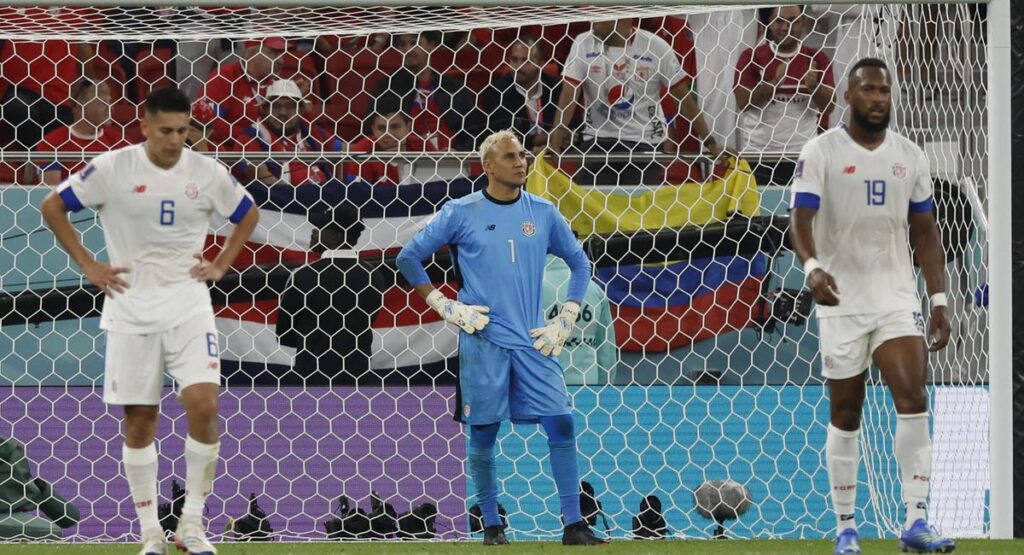
2. Sponsors at a Crossroads Brands that invested millions to be official sponsors of FEDEFUTBOL (banks, telecom companies, breweries) are left with a “toxic” asset. The Return on Investment (ROI) of stamping the logo on the jersey or training billboards depends on the mass exposure given by the World Cup. Now, those brands must decide whether to cancel campaigns already produced or launch them to an apathetic public, risking being ignored or, worse, receiving the rejection of fans angry with the team. The narrative of “National Pride” and “Pura Vida” that usually dominates advertising on these dates becomes void of content.
3. Digital Silence In the age of social media, the digital conversation (trending topics) during La Sele matches is a monetizable asset. Without Costa Rica on the pitch, traffic on sports news websites and interaction on social networks will drop drastically, affecting revenue from programmatic advertising and digital campaigns for local media.
VI. Tourism and Country Brand: The Broken Showcase
Perhaps the damage hardest to quantify, but the costliest in the long run, is the loss of global positioning. Football is the cheapest and most effective public relations campaign in the world. In Brazil 2014, the “Costa Rica” brand obtained media exposure valued in hundreds of millions of dollars that no budget from the ICT (Costa Rican Tourism Institute) could match.
1. The Golden Opportunity in North America The elimination hurts double because of geography. The 2026 World Cup is played in the United States, Mexico, and Canada; that is, in the main source market for tourists to Costa Rica. We had the historic opportunity to carry out brand activations (tourism stands, visitation campaigns) directly in the host cities, taking advantage of the proximity. Costa Rica could sell itself as the ideal destination for the “post-World Cup” trip for tourists already in the region. By failing to qualify, that strategic window closes, ceding the space to countries like Panama, which will be able to promote their beaches and canals to the North American audience in situ.
2. The Vanished “Google Effect” During the weeks that a country participates in the World Cup, global Google searches about that country skyrocket. People in Asia, Europe, and the Middle East search “Where is Costa Rica?”, “What to do in Costa Rica?”. This digital curiosity is the seed of future tourism. By being absent, the algorithm forgets us. Millions of eyes will be on the qualified nations, while Costa Rica loses relevance in the mental map of the international traveler, reducing the potential to attract new market niches.
VII. The Internal Crisis of Football: The Boomerang Effect
The final link in this chain of losses is, paradoxically, the very one that originated the crisis: the structure of national football. Elimination means not only less money for the country’s economy but a brutal cut in the survival budget of FEDEFUTBOL itself and the First Division clubs.
1. Scissors to Development The Costa Rican Football Federation operates largely thanks to World Cup cycles. Without the jackpot of qualification, the budget for the 2026-2030 period will suffer a severe deficit. The first affected will be programs that do not generate immediate income: youth leagues (U-15, U-17, U-20), women’s football, beach soccer, and futsal. These sectors will see reduced friendlies, travel allowances, and technical staff, compromising not only the present but the formation of the next generation of players, creating a vicious cycle of low performance.
2. Devaluation of National Talent The World Cup is the largest transfer showcase on the planet. Players like Keylor Navas, Joel Campbell, or Yeltsin Tejeda built their international careers (and brought foreign currency to the country) thanks to their performances in World Cups. Without that exposure in 2026, the market value of Tico players stagnates. National clubs (Saprissa, Alajuelense, Herediano, etc.) lose the opportunity to sell players at “premium” prices to European leagues or the MLS. A player who does not go to the World Cup is worth less, and therefore, less money enters the forming clubs through solidarity rights and transfers.
VIII. Conclusion: Rebuilding on the Ruins
The final whistle against Honduras did not just mark the end of a match; it marked the beginning of a sectoral recession. The bill for this elimination is already printed and is unpayable: nearly $100 million dollars evaporating from the Costa Rican economy, thousands of temporary jobs that will not be created, and a country brand that will lose its shine on the global stage.
The lesson is harsh but necessary: modern football is a high-performance industry. When sports management fails, when planning is short-term, and when talent is not renewed, the consequences spill over the sporting realm and hit everyone’s wallet.
For the jersey seller on Avenida Central, for the bar owner in San Pedro, and for the marketing manager of a multinational, 2026 will be a lean year. Costa Rica will have to watch the North American World Cup on television, aware that the cost of sporting mediocrity, at the end of the day, is paid in cash.
The road to 2030 starts today, but the fiscal and emotional hole left by 2026 will take years to fill.









